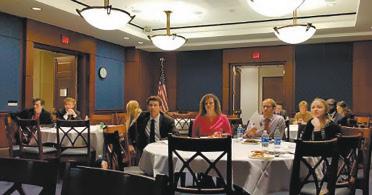
14 minute read
Division of Water Resources Cancels Virtual Hearings in Favor of In-Person Hearings
Figure 3. Congressional staffers, invited by Senator Mike Lee (R-Utah) attending a FREES presentation.

The financial burden shifts from the public sector to the private sector and the funds do not come out of the annual BLM budget. Equally important, this would open up holding facilities to receive the thousands of horses required to be removed from rangelands to achieve AML and subsequently move those horses and burros into private sector care. And finally, it would provide political cover to Congress by avoiding unrestricted sale and/or euthanasia. With political cover in place, there should be motivation for Congress to provide the direction and funding for the reductions of on-range populations, eventually reaching AML, all while utilizing effective fertility control methods and management to maintain AML. A portion of the funding could then be funneled towards restoration of rangelands that were degraded by overpopulation use. The activities described above have made a difference in what could accurately be described as an otherwise hopeless and unwinnable cause (Figure 4). It is easy to be discouraged when faced with a challenge like WH&B management. We hope that these articles have convinced readers that changing the course of WH&B management in order to salvage the health of our rangelands and western rural economies is not a pipe dream (an unattainable or fanciful hope or scheme). Rather, it is a challenge worth facing and engaging in because the alternative is unconscionable. We will not falter, stumble, or fail.
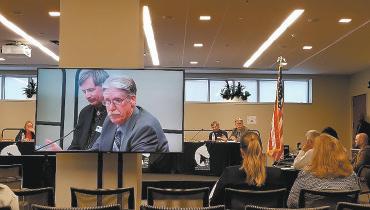
EXPERIMENT STATION College of Agriculture, Biotechnology & Natural Resources
JOB DESCRIPTION: The Nevada Agricultural Experiment Station (NAES) at the University of Nevada, Reno is recruiting for a
Ranch Manager (Sheep Herd Manager) in Eureka, Nevada. The mission of the Eureka Station is to demonstrate sustainable, Integrated Management of Crops, Sheep, and Rangeland in Dryland Environments and provide education and outreach to the agricultural community and area producers. This position is critical to the establishment of the station, maintenance of the breeding flock and pending research functions. The successful candidate will manage the daily operations of the Rafter 7 Merino and Merino Rambouillet sheep in an arid rangeland and private pasture environment. The Rafter 7 flock is a unique and exceptional flock of sheep that has been bred for range hardiness for high quality lamb and wool production. The flock will also contribute to rangelands research, benefits of multiple species grazing, wildlife and livestock interactions, animal disease control and improved production or best management practices. Service duties will include daily management of the flock and associated herders, coordination and participation with research scientists, and outreach and educational activities.
For questions, please contact: Gary McCuin - 775-237-6134 or Verla Jackson - 775-682-8484 Mailing: CABNR • 1664 North Virginia, MS0221 • Reno, NV 89557-0221 For detailed job description & to apply, visit https://nshe.wd1.myworkdayjobs.com/en-US/ UNR-external/job/Extension-Eureka---University-of-Nevada-Reno/Ranch-Manager---Eureka_R0120588-1
The Division of Water Resources has announced they have eliminated their planned virtual hearings in favor of inperson hearings for proposed Orders issued for a number of ground water basins around the state. They also gave additional Orders to make a more complete slate of proposed orders. These meetings, which will follow the Governor’s COVID-19 mandates, will be in effect for those who wish to attend in person. Written testimony options are also provided for all hearings, deadlines for which will be November 2, 2020.
IN-PERSON SCHEDULE:
Monday, October 12 (starting at 9:30 a.m.) Churchill County Commission Chambers, 155 N. Taylor St. Suite 145, Fallon, NV. Proposed orders to designate, establish preferred use and curtail new appropriations will be covered for these basins: • Fireball Valley (077) located within
Churchill and Washoe Counties • Edwards Creek Valley (133) located within
Churchill County Monday, October 12 (starting at 1 p.m.) Mineral County Commission Chambers, 105 South A St., Hawthorne, NV. Proposed orders to designate, these basins: • Alkali Valley-Northern Part (111A) • Alkali Valley-Southern Part (111B) • Walker Valley-Shurz Subarea (110A) Further, these proposed orders are to designate, establish preferred use and curtail new appropriations for these basins: • Teels Marsh Valley (114) • Queen Valley (116) • East Walker Are (109) • Walker Lake Valley-Lake Subarea (110B) Tuesday, October 13 (starting at 9:30 a.m.) White Pine County Library Meeting Room, 950 Campton St., Ely, NV. Proposed orders to designate, these basins: • Long Valley (175) • Spring Valley (184) • Pleasant Valley (194) • Snake Valley (195) • Butte Valley-Southern Part (178B) Further, these proposed orders are to designate, establish preferred use and curtail new appropriations for this basin: • Newark Valley (154) Tuesday, October 13 (starting at 1 p.m.) Eureka County Commissioner’s Chambers, Eureka County Courthouse, 10 South Main St, Eureka, NV. Proposed orders to designate, this basin: • Stevens Basin (152) located within
Eureka County Wednesday, October 14 (starting at 9 a.m.) Elko County Convention Center, Ruby Room, 700 Moren Way, Elko, NV. Proposed orders to designate, these basins: • Independence Valley (036) • South Fork Owyhee River Area (035) • Goose Creek Area (041) • Butte Valley-Northern Part (178A) Further, these proposed orders are to designate, establish preferred use and curtail new appropriations for these basins: • Antelope Valley-Southern Part (186A) • Antelope Valley-Northern Part (186B) Wednesday, October 14 (starting at 12:30 p.m.) Lander County Courthouse, Community Meeting Room, 50 NV-305, Battle Mountain, NV. Proposed orders to designate, this basin: • Smith Creek (134) Wednesday, October 14 (starts at 3:30 pm) Humboldt County Commission Chambers, 50 West 5th St., Winnemucca, NV. Proposed orders to designate, these basins: • Continental Lake Valley (002) • Mud Meadow (026) Further, these proposed orders are to designate, establish preferred use and curtail new appropriations for these basins: • Pueblo Valley (001) • Gridley Lake Valley (003) Also, further these proposed orders are to extend these designate areas, establish preferred use and curtail new appropriations for these basins: • Silver State Valley (032) • Quinn River Valley-Orovada Subarea (033A) • Quinn River Valley-McDermitt Subarea (033B) Thursday, October 15 (starting at 10:30 p.m.) Pershing County Courthouse, LowerLevel Round Room, 400 Main St, Lovelock, NV. Proposed orders to designate, this basin: • Granite Springs Valley (078) located within
Pershing and Churchill Counties Further, this proposed order is to designate, establish preferred use and curtail new appropriations for this basin: • Kumiva Valley (079) within Pershing Co.
Diverse Opinions, Distinctive People, Exceptional Leadership to find Ultimate Solutions through the Wonders of ROGER Robert Kraft, Chief Executive Officer of the New England Patriots, once said “One of my beliefs about leadership is it’s not how many followers you have, but how many people you have with different opinions that you can bring together and try to be a good listener.” The world’s problems will always seem endless, the opinions we have about them will continuously often be different unalike to one another and there will be disagreements, obstacles and issues in every direction one looks. Although there are multiple solutions to these massive problems, the one common denominator is we need each other to fix them. That sounds simple; however, it actually takes a lot of work. Before people can work together, individuals with different perspectives need to be heard and understood, and relationships and trust need to be built – which takes time and effort. Jon Griggs, manager of Maggie Creek Ranch and spokesperson for the rancher-led Results Oriented Grazing for Ecological Resilience, ROGER, collaborative group, understands these issues very well. Griggs has always had an affinity for ranching after spending his summers as a child on his grandparents’ ranch in Tuscarora, Nevada. Griggs started as a cowboy at the YP ranch in 1985. He moved to Maggie Creek Ranch in 1991 and became the ranch manager in 1998. While Griggs appreciates the variety of day-to-day life on a ranch, he notes that it is also one of his biggest challenges. “As a manager, it seems nearly impossible to sometimes stay ahead of the changes that are thrown our way whether political, environmental, economic or human issues – there’s always something,” said Griggs.
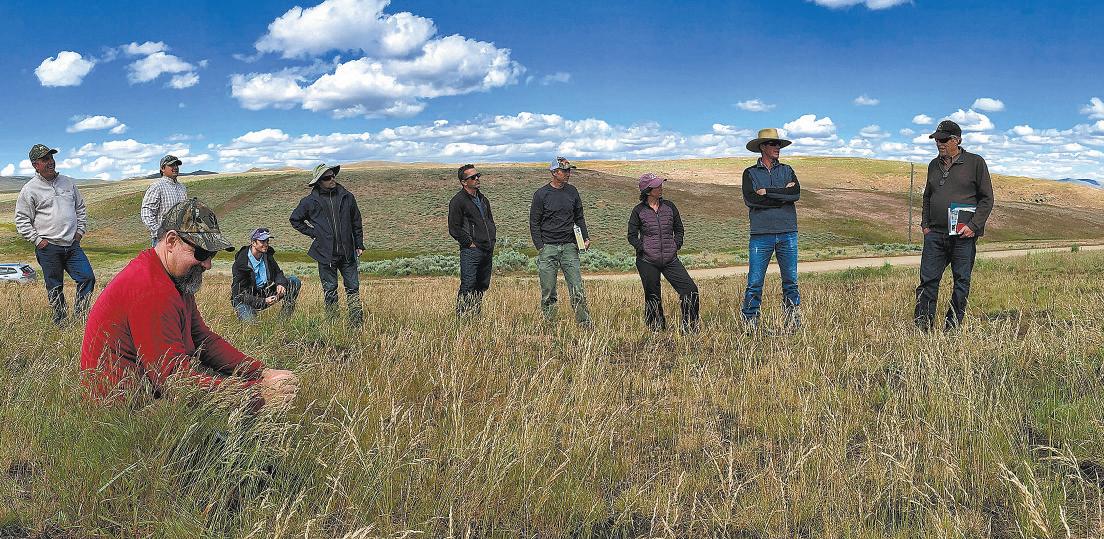

Laura Van Riper, a social scientist with the BLM
One such challenge came to a head in the fall of 2015 when the Bureau of Land Management (BLM) rolled-out their Land Use Plan Amendment to conserve the Greater Sage Grouse (GRSG) west wide. The amendment created concerns with Griggs and other ranchers due to possible potentially unattainable targets and its focus on a single species rather than the health of the sagebrush ecosystems, upon many other species and values depend. To address these concerns, a group of Nevada ranchers came together with various Federal and State Agency leaders and staff and other partners in early 2016. The hope was to bring together individuals from dissimilar backgrounds, each with parallel concerns, but different ideas of solutions, to meet and come to terms with big picture issues that are facing the sagebrush ecosystem as a whole (e.g., wildfire, grazing, endangered species, monitoring, etc.). The first two-day gathering of the group, now known as ROGER, was difficult. “There really were no relationships built, there wasn’t a lot of trust established in the group and ROGER would have never been born if we hadn’t figured out that we needed some facilitation,” Griggs said. After the initial meeting, Laura Van Riper, a social scientist with the BLM, jumped on board as a facilitator and coordinator for the newly emerging group. Van Riper has over two decades of academic and on the ground experience in with collaborative communitybased natural resource management and conflict
resolution both in the US. and abroad. Since 1999, she has worked with the BLM’s National Riparian Service Team and Collaborative Action and Dispute Resolution program. Over the years in this role, she has worked to bring diverse interests together to address the social and ecological dimensions of natural resource issues across the western US. For the past five years, she has been occupied almost exclusively in Nevada, facilitating and coordinating a number of collaborative efforts in the state. When mentioning Van Riper’s name, Griggs said, “I’ve met a few social scientists in my career and I think if we had a lot more of them, we’d need fewer lawyers. Laura helped us to establish good relationships, build trust and then have difficult conversations where we may not always agree, but we do see other’s perspectives and can work toward mutually beneficial solutions.” Griggs describes Van Riper’s work as amazing and notes she is devoted to this group and others in the state. He believes there would have been dangerous divergences, similar to others experienced in Nevada, if it had not been for her. Van Riper’ goal is to increase the exposure and use of collaborative community-based natural recourse management practices. She explained natural resources issues are complicated, “They are not straightforward science
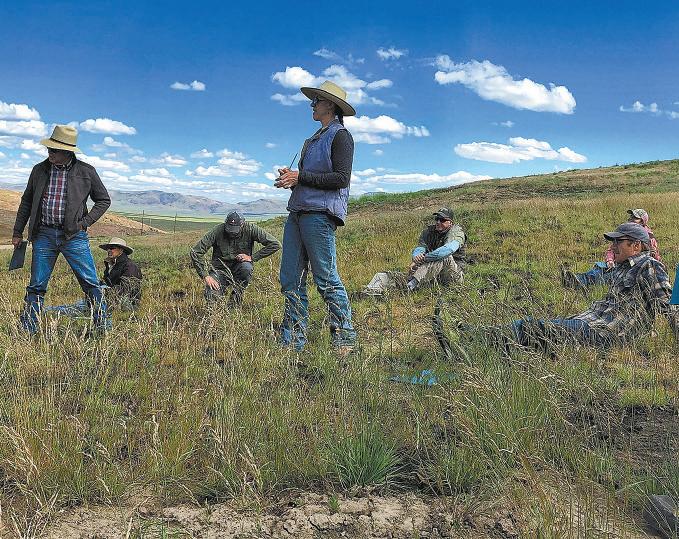
questions with simple answers that can be determined by trained specialists working in a vacuum.” Van Riper stressed there are ecological, economic, political and social dimensions which need to be considered in every decision, and not just one answer is right. Van Riper said, “Having the people who effect and are most effected by natural resource decisions meaningfully engage in conversations about them is critically important.” Van Riper discussed the purpose of ROGER is to bring various (parties (ranchers, agencies, researchers, nonprofit organizations and other partners) together to seek out ways to both protect GRSG habitat and conserve sagebrush ecosystems while supporting ranching - not at one at the expense of the other. According to ROGER’s purpose statement, their goal is to “develop a shared vision of on-the-ground conditions; create a common understanding of what it will take to achieve those outcomes; identify ways to provide ranchers needed flexibility and take action; and document and share successes, failures and lessons learned with this group and others.” The group’s function is to “create venues that brings diverse parties together to communicate, share information, ask the hard questions, struggle through disagreements and learn in order to develop solutions to the problems at hand. The group functions as an information,

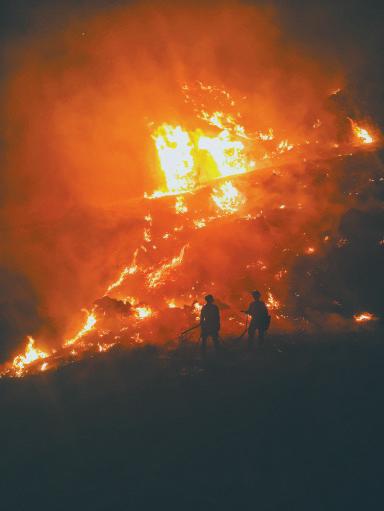
learning and communication venue that supports individuals or groups of individuals experimenting in different ways.” (ROGER Fact Sheet) While ROGER is largely centered in Nevada, people from neighboring states are working with the group as well to share information and lessons learned. Although ROGER began to help further responsible grazing in GRSG habitat, the diversity and horsepower of the group has expanded its endeavors to tackle numerous issues surrounding public lands for grazing. Specifically, ROGER currently has four focus areas: 1. Outcome-Based Grazing - Identify resource objectives and provide ranchers with the means to achieve them through flexible grazing permits 2. Adaptive Management Planning - Identify and apply tools and techniques to help guide grazing management and assess progress 3. Wildfire Management - Explore issues such as targeted grazing, post-fire rehabilitation and grazing management, and engagement of ranchers in fire suppression 4. Assessment & Monitoring - Explore Experiment with new ways to assess and monitor rangeland conditions and GRSG habitat by obtaining accurate and precise measurements across a large scale through timely and cost-effective means. ROGER has had achievements in each of these areas. First, four ROGER ranchers were selected as BLM National Outcome-Based Grazing (OBG) Demos. One OBG term permit renewal (TPR) has recently been completed, with the other three scheduled to be completed in 2020-2021. Second, ROGER has worked with University of Nevada extension and various ranchers as part of a Western Sustainable Agriculture Research and Education grant to explore the use of the Grazing Response Index - which focuses on time (duration), timing (season of use), intensity (amount of forage removed) and opportunity for plant recovery - as an adaptive management planning tool. Third, two ROGER ranchers are engaged in the first BLM National Targeted Grazing Demo. The targeted grazing project was first implemented in spring 2018 when approximately 2,000 cattle were released for three weeks to graze a fuel break in cheatgrass. This fuel break worked to hold the Boulder Creek fire, started in July 2018, at only 1028 acres in an area that is susceptible to large fires and protected past Emergency Stabilization and Rehabilitation efforts designed to recover sage grouse habitat after past fires. I’m working on getting a HDR photo. ROGER members also worked closely with the Martin Fire coordination group to address post-fire grazing management, through the use of management agreements rather than automatic closures, and restoration issues, such as the strategic use of native and non-native seed mixes and green strips. In Griggs’s opinion wildland fire is one of the biggest threats to the ranching community and the sagebrush ecosystem upon which GRSG and 350 other species depend. Griggs has suffered from tragedy like many others on the ranch he manages; eighty percent of Maggie Creek Ranch has burned in the last thirty years; Griggs witnessed houses being lost, buildings burnt and destruction to lands for grazing. Griggs said, “We have lost cattle, we have put ourselves at risk and we have had to close parts of the ‘factory’ several times to rebuild.” Griggs also discussed the difficulty ranchers have, trying to graze for fine fuel reduction, or fuel breaks, within the limitations of the public land permits. He stressed how tough it is to be proactive with fire, but also expressed hope and excitement with the targeted grazing projects and other efforts concerning wildfire rehab. “I think we may at least see the corner now if we aren’t turning the corner on being proactive with these uncontrollable mega fires we’ve experienced. I think ROGER has shown that grazing can be an economical and effective tool among many in the before and after conversations about fire,” said Griggs. Last, ROGER has also convened a science team to explore the use of remote sensing, threat-based modeling and vegetation mapping to assess and monitor rangeland health and GRSG habitat across the Great Basin. The team includes rangeland ecologists, sage grouse habitat biologists, remote sensing specialists, various agency partners and ranchers. To date, the BLM and Fish and Wildlife Service (FWS) has contributed $700,000 to fund the first phases of a five-year project to develop a spatially explicit map for the Great Basin that incorporates State and Transition models, Disturbance Response Groups, GRSG habitat objectives and remote sensing tools. The intent is to “develop a spatially explicit map as a tool for conservation planning and monitoring the results of OBG actions in conserving and improving GRSG habitat and rangeland health objectives on-the-ground.









